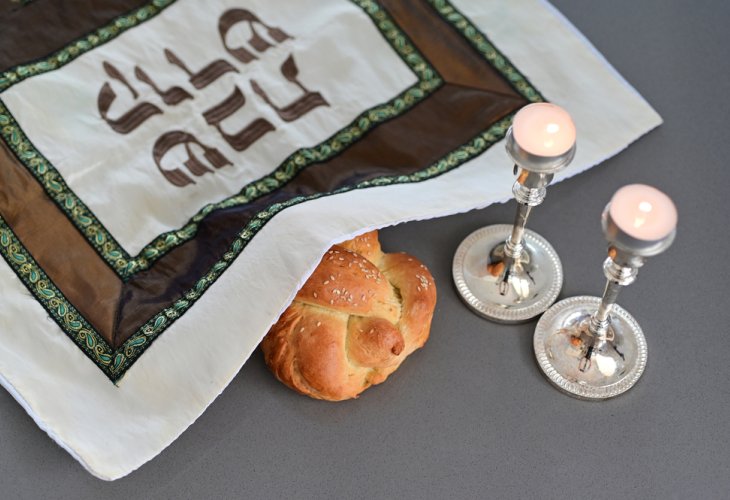Beginners Guide
The Beginner's Guide: What Determines Permitted and Forbidden Actions on Shabbat?
Discover what dictates Shabbat's dos and don'ts, and what proper observance entails.
 (Photo: shutterstock)
(Photo: shutterstock)The activities prohibited on Shabbat are not forbidden due to the physical effort involved in performing them. Lighting a match for example, which is very easy and not tiring, is forbidden on Shabbat, while lifting heavy chairs is allowed. This is because lifting heavy objects is not defined as a 'melachah' (forbidden labor) on Shabbat. When Hashem commanded us to keep Shabbat, it is said, "The seventh day is a Shabbat to Hashem your God; you shall not do any melachah" (Exodus 20:9). What is forbidden on Shabbat is termed 'melachah,' and it does not refer to physical exertion but is defined differently. How is 'melachah' defined?
When Moses was on Mount Sinai, Hashem taught him the oral interpretation of the written Torah, over forty days and nights. The Oral Torah includes guidance on fulfilling the commandments written in the written Torah, such as how tefillin should look and how to put them on, how to perform ritual slaughter, the 39 melachot forbidden on Shabbat, and so on. Moses passed all this to the people, and thus the Oral Torah was transmitted orally from generation to generation, until it was written down by Rabbi Judah the Prince in the Mishnah. This is how the people knew how to practically fulfill the commandments written in the Torah and knew which activities were forbidden on Shabbat.
Israel's sages knew that everything we received orally has hints in the written Torah, from which we can identify what we already know from tradition. They succeeded in decoding and deducing a rule that states that between adjacent sections in the Torah, there is a connection between them.
When Moses was on Mount Sinai, Hashem commanded him to build the Tabernacle, a tent with immense sanctity where offerings were made to Hashem. Moses received precise instructions from Hashem on how to build and work in the Tabernacle. Right after the command to Moses about the Tabernacle, Hashem instructed him to tell the people of Israel to keep the Shabbat, "You shall keep my Shabbats, for it is a sign between me and you throughout your generations" (Exodus 31). The sages learned about the connection between the Tabernacle's work and the observance of Shabbat from the fact that the commandment to keep the Shabbat was written in the Torah immediately after the command to build and work in the Tabernacle. From the Tabernacle, we learn what is permitted and forbidden to do on Shabbat.
As mentioned before, Israel's sages already knew this from the Oral Torah, but this is the source in the written Torah.
The Tabernacle's labors are called 'avot melachah' and are forbidden on Shabbat, but there are also activities that weren't in the Tabernacle but are similar to the 'avot melachah' that were there. These are called 'toladot' and are also forbidden on Shabbat.
For example, drawing a picture is a tolada of the melachah of writing, and it is also prohibited on Shabbat. When did they write in the Tabernacle's construction? When building the Tabernacle, they wrote the order on the beams: Aleph, Bet, Gimel, etc., so they knew the correct placement of each beam.
Writing letters is not a hard task, and as mentioned above, the definition of melachah on Shabbat, of what is permitted and forbidden, is not based on how difficult or tiring it is but solely based on the 39 labors that were in the Tabernacle called 'avot melachah'. Likewise, similar labors called 'toladot' are also forbidden on Shabbat.
The Weekly Challenge
Download for free the booklet "Shabbat in Law and Legend" and study two pages daily. Alternatively, you can purchase the booklet at a nominal cost and study it systematically each Shabbat.
This booklet is written in an engaging language. The legend section presents ideas and stories to conceptually understand the mitzvah of Shabbat, and the law section provides the details of the law.
To download the "Shabbat in Law and Legend" booklet in PDF format click here
For purchasing the "Shabbat in Law and Legend" booklet, check the nearest point of sale at the beginning of the booklet, or purchase through Hidabrut Shops here.
Want to keep or print the 'First Steps to Observing Shabbat' file?Click hereto download the file.
Also see:
The Guide for the Observant: Why is Shabbat so critical? And what can be gained from it?
The Guide for the Observant: What to do to ensure Shabbat isn't empty and boring?
Don't miss: The importance of the last two Shabbats of the year
Agree that everything is true, but keeping Shabbat?! I can't
We didn't touch: What prevents you from keeping Shabbat? These are the answers we found
Regarding Torah and mitzvot: "I do what I can"
From "70 Hard Questions in Judaism" – "If Shabbat is a day of rest, why are there so many restrictions?"

